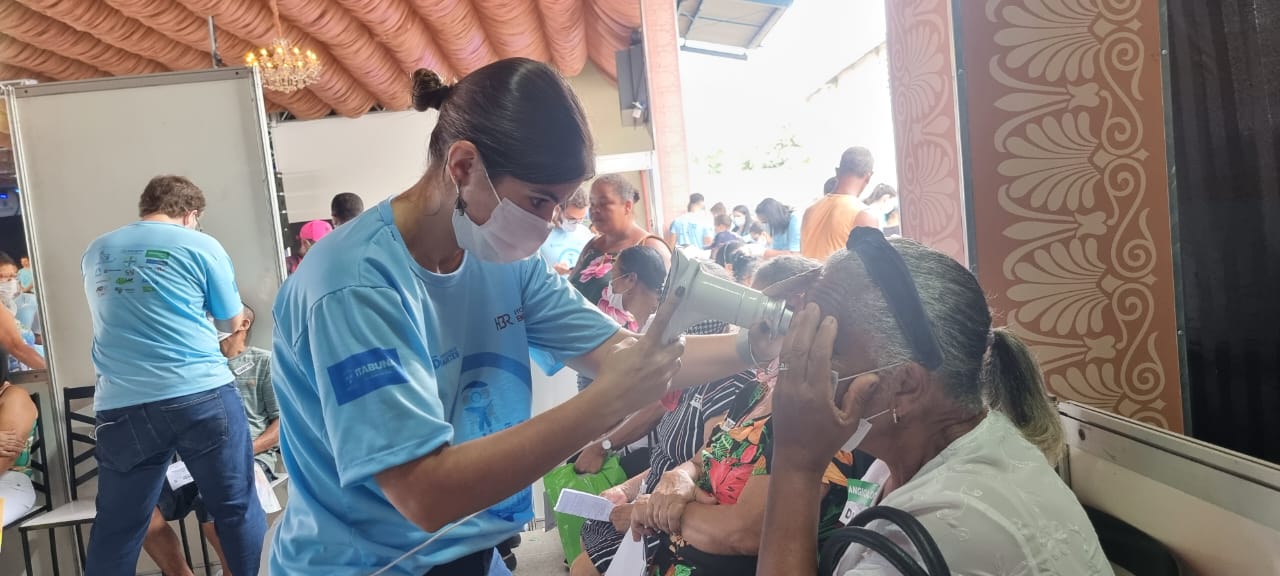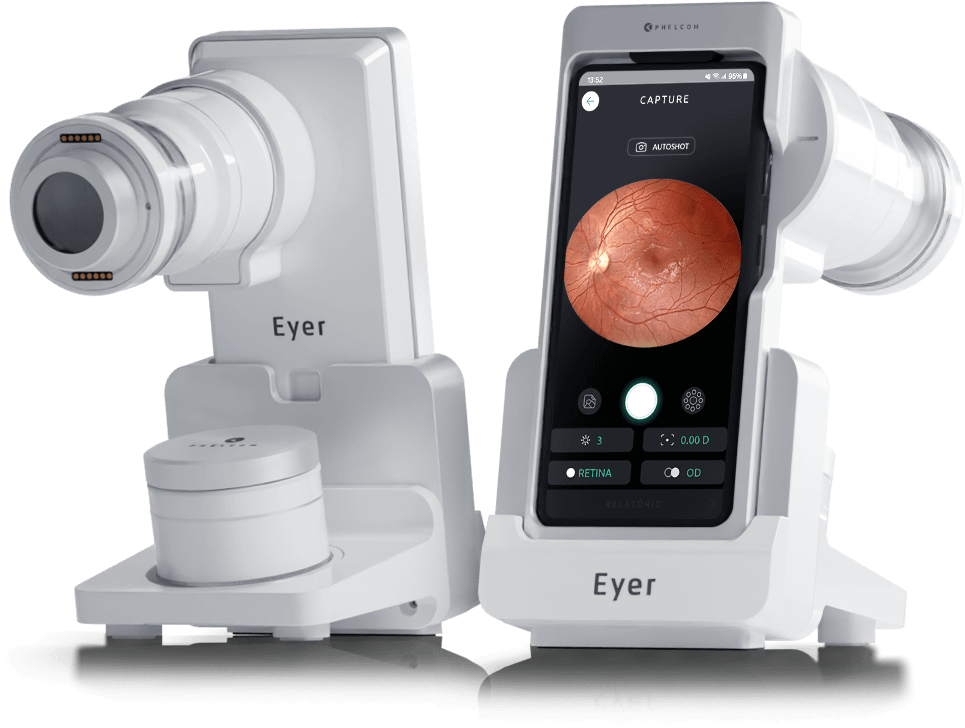Fundus imaging plays a crucial role in diagnosing and monitoring various eye diseases, including diabetic retinopathy. However, in many low- and middle-income countries, access to conventional retinal imaging equipment remains limited due to high costs and infrastructure requirements. Additionally, publicly available image datasets for doctors, researchers, and clinicians remain scarce, particularly for images captured with portable fundus cameras.
In this context, portable fundus cameras like the Eyer have emerged as a more accessible and cost-effective solution for eye screening and disease management. Mounted onto a smartphone, the Eyer captures high-quality retinal images in minutes—without requiring pupil dilation.
These devices can be used in a variety of settings beyond hospitals, such as community health screenings and remote telemedicine consultations. Additionally, they record detailed metadata typically unavailable in other datasets, including patient age, sex, diabetes duration, treatments, and comorbidities.
Recently, Scientific Data, a journal from the Nature portfolio, published the article “A portable retina fundus photos dataset for clinical, demographic, and diabetic retinopathy prediction,” introducing mBRSET: the first publicly available diabetic retinopathy dataset captured using handheld fundus cameras in real-world, high-burden environments. Among the authors of the study are ophthalmologist Fernando Korn Malerbi and Phelcom’s CEO, José Augusto Stuchi.
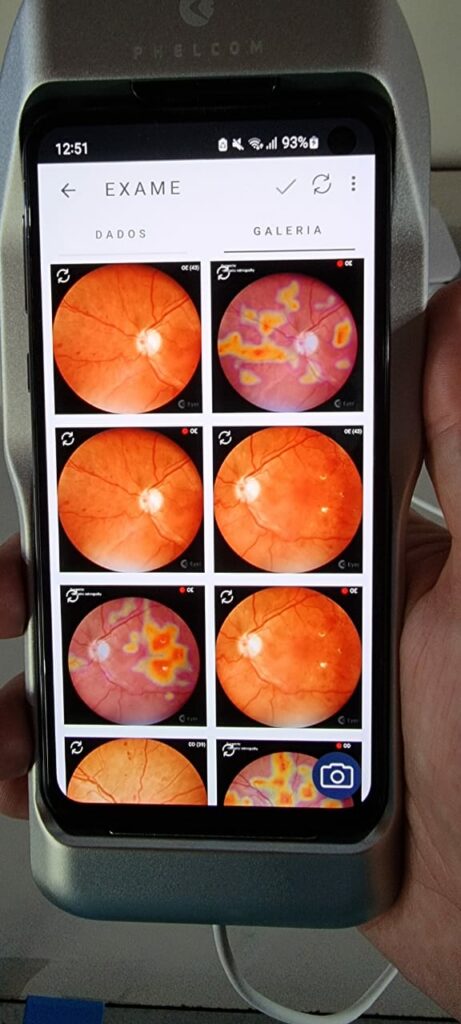
Fundus images captured with Eyer during the Itabuna Diabetes Campaign, held in 2022, highlighting the attention map generated by EyerMaps, indicating possible anomalies.
mBRSET: A Groundbreaking Dataset
mBRSET consists of 5,164 from 1,291 patients of diverse backgrounds, all captured with the Eyer device during the 2022 Itabuna Diabetes Campaign in Bahia. Recognized as one of the world’s largest diabetes prevention and treatment initiatives, this campaign provides hundreds of patients with vital screenings—such as fundus examinations—and referrals for specialized treatment.
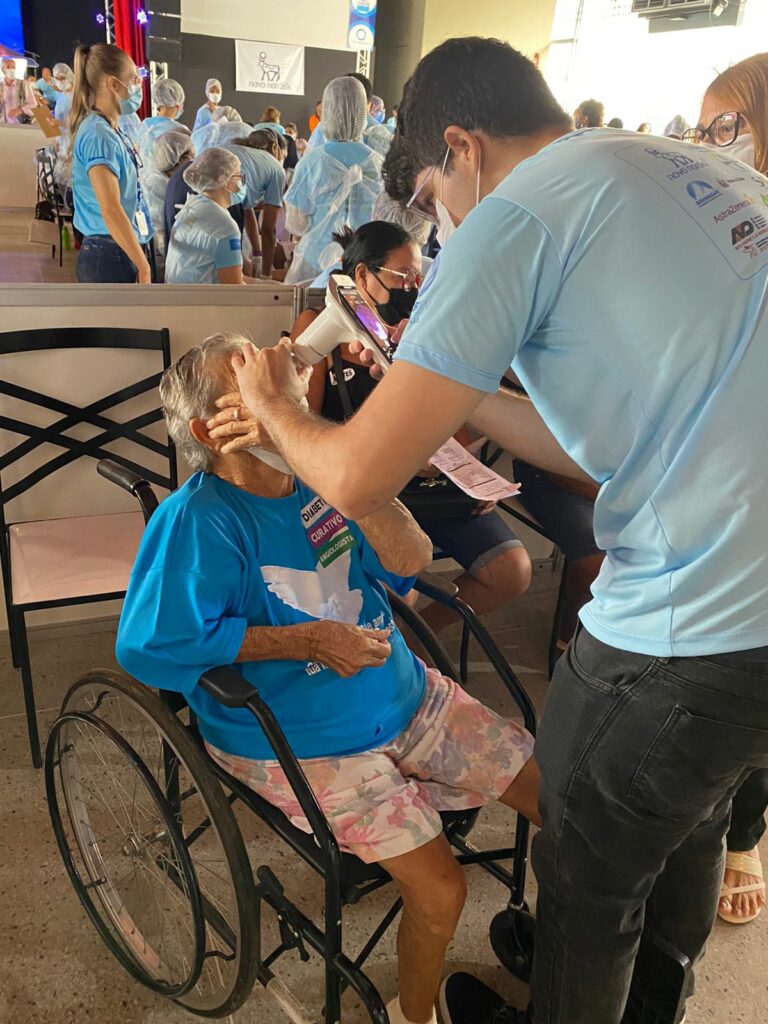
Exam performed with Eyer during the Itabuna Diabetes Campaign, held in 2022.
To validate the utility of mBRSET, state-of-the-art deep learning models were trained for benchmarking, demonstrating high accuracy in diagnosing diabetic retinopathy and macular edema, as well as predicting demographic data.
An analysis of 4,885 assessed images revealed that 3,759 images (76.79%) showed no signs of diabetic retinopathy (DR), 272 images (5.56%) indicated mild non-proliferative DR, 570 images (11.64%) exhibited moderate non-proliferative DR, 82 images (1.67%) showed severe non-proliferative DR, 427 images (8.69%) displayed signs of macular edema.
A Milestone for Ocular Health and Scientific Research
The significance of the mBRSET dataset can be outlined in 5 key aspects:
Representing Brazil’s Diverse Population
mBRSET helps reduce the underrepresentation of low- and middle-income country (LMIC) populations in ophthalmological datasets by including individuals from various ethnic and socioeconomic backgrounds in Brazil.
The First Public Dataset with Portable Camera Images
This is the first publicly available dataset featuring images captured with portable fundus cameras, reflecting the increasing adoption of this technology in resource-limited settings.
Data Collection in Real-World, High-Demand Environments
Images were captured in high-volume clinical settings, ensuring the dataset accurately represents real-world challenges in eye disease screening and management.
Inclusion of Detailed Demographic Data
mBRSET goes beyond retinal images, incorporating information such as gender, education level, and health insurance status. This enables researchers to evaluate AI algorithm performance across different subpopulations.
A Foundation for AI Development in Ophthalmology
This dataset serves as a critical resource for training and validating AI algorithms, fostering advancements in automated screening, diagnosis, and monitoring of diabetic retinopathy and other eye conditions.
Phelcom CEO José Augusto Stuchi emphasizes the dataset’s impact on the scientific and medical communities:
“The creation of this mBRSET marks a significant milestone in ocular health, particularly for regions with limited resources. By providing high-quality images captured with portable devices, we expand research opportunities and accelerate the development of AI-driven solutions that can revolutionize the diagnosis and treatment of eye diseases.”
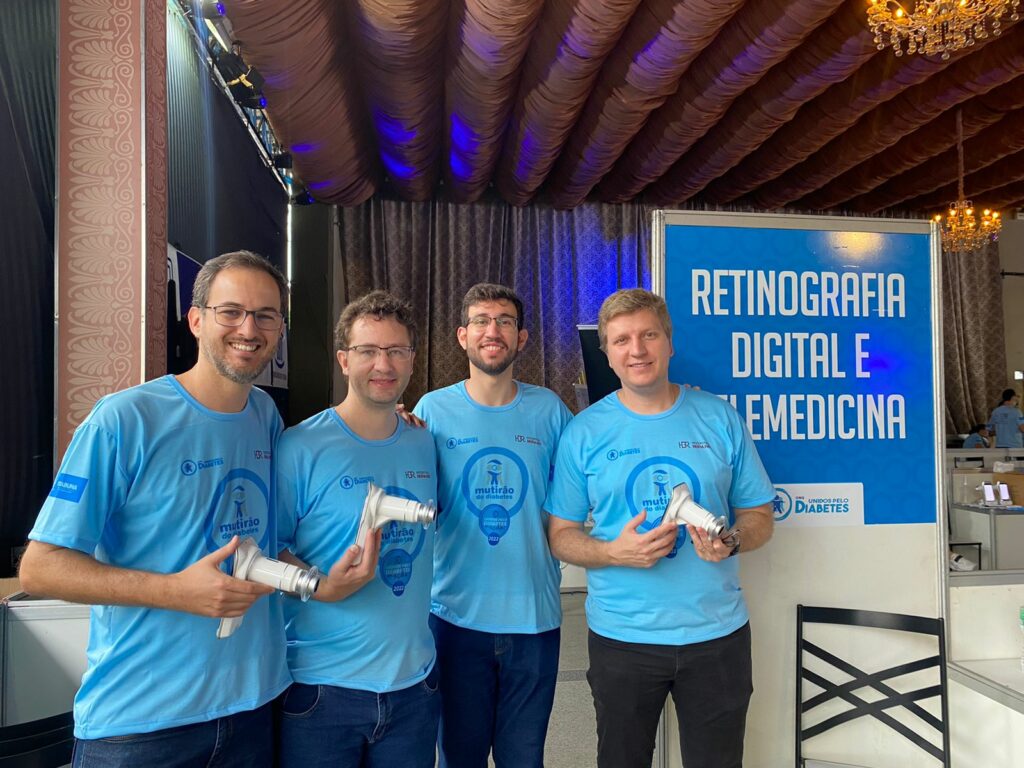
Diego Lencione, co-founder and CTO of Phelcom, Flavio Pascoal Vieira, co-founder and COO of Phelcom, Paulo Prado, coordinator of Mobile Software and AI at Phelcom, and José Augusto Stuchi, co-founder and CEO of Phelcom, during the Itabuna Diabetes Campaign, held in 2022.
Eyer
The Eyer is a portable fundus camera that attaches to a smartphone, enabling high-quality retina exams in just minutes—without the need for pupil dilation.
The technology supports the diagnosis of more than 50 diseases, including: glaucoma, cataracts, diabectic retinopathy, retinoblastoma, hypertensive retinopathy, retinopathy of prematurity, ocular toxoplasmosis.
Recently, Phelcom launched Eyer2 Basic, an enhanced version of the device featuring new built-in tools for expanded diagnostic capabilities. In addition to posterior eye imaging, Eyer2 Basic enables the detection of anterior segment conditions such as: blepharitis and other eyelash abnormalities, meibomian gland dysfunction, styes, conjunctival and eyelid tumors, advanced cataracts, foreign bodies and burns, corneal injuries, keratitis caused by dry eye, contact lenses, infections and ulcers.
About Phelcom
Phelcom Technologies is a Brazilian medtech company based in São Carlos, São Paulo. Founded in 2016 by three young researches—a physicist, an electronics engineer, and a computer engineer—the company developed a portable retinal camera integrated with a smart phone.
The first prototype was inspired by co-founder Diego Lencione’s personal experience, as his brother struggled with a severe vision condition from childhood.
In 2019, Phelcom launched its first product, the Eyer portable retinal camera, in Brazil. Five years later, the company introduced the Eyer2 Basic, a platform capable of capturing high-quality images of both the posterior and anterior segments.
To date, Phelcom’s technology has benefited over two million people across Brazil and multiple countries, including the United States, Japan, Chile, Colombia and the United Arab Emirates. It has also been used in over 100 social outreach initiatives.

